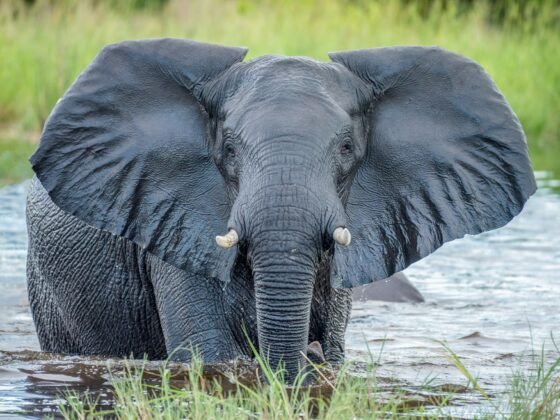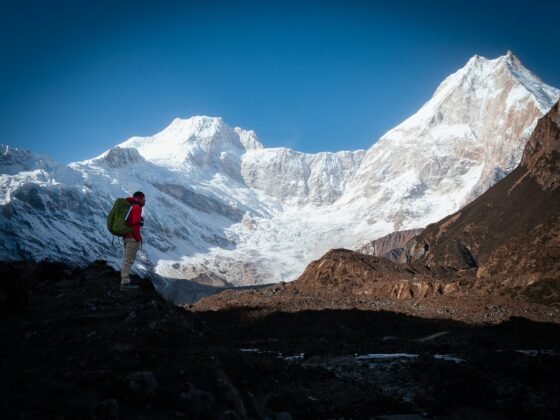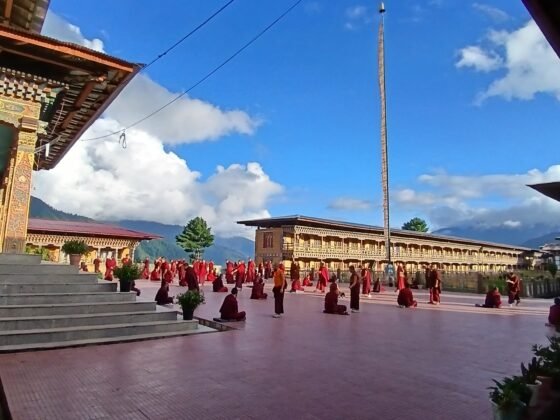Solo travel offers an unmatched sense of freedom and adventure, and the Great Smoky Mountains are an ideal destination for anyone looking to experience nature, history, and culture on their own terms. While traveling solo allows you to set your own pace, it also requires careful planning to make the most of your trip. The Smokies are brimming with activities, from scenic hikes to lively towns like Sevierville and Pigeon Forge, so having a clear itinerary can help you navigate the best this region has to offer.
This guide highlights the must-see spots and ensures your solo trip is both fulfilling and memorable.
1. Kick Off Your Adventure in Sevierville
Start your journey in Sevierville, a charming town known for its rich history and Southern hospitality. As a solo traveler, you’ll appreciate the welcoming atmosphere and the town’s easy access to the Smokies. Explore the historic downtown area, where you can visit landmarks like the Dolly Parton statue or the Sevier County Courthouse. Sevierville is a great spot to immerse yourself in the local culture before heading deeper into the mountains.
A trip to Sevierville isn’t complete, however, without sampling some of the local cuisine. If you want to taste the best BBQ in Sevierville, one place you shouldn’t miss is Buddy’s bar-b-q. Known for its mouthwatering Southern-style barbecue, Buddy’s offers a variety of delicious smoked meats, from tender pulled pork to juicy ribs. Be sure to try their signature sauces, which add an extra kick to the already tasty dishes.
2. Discover the Beauty of Great Smoky Mountains National Park
No visit to the Smokies is complete without exploring the Great Smoky Mountains National Park. As a solo traveler, you’ll have the freedom to choose your own adventure, whether that’s a slow, relaxed walk along a nature trail or a more challenging hike. Popular trails like Alum Cave Trail and Chimney Tops offer stunning views, waterfalls, and peaceful forest settings that are perfect for reflection and solitude.
Solo hiking in the Smokies is a rewarding experience, but it’s important to be prepared. Make sure you have a detailed trail map, plenty of water, and a plan for your route. Whether you’re a seasoned hiker or just out for a scenic walk, the Smoky Mountains will leave you in awe of their natural beauty.
3. Explore the Rich History at Cades Cove
Cades Cove is one of the most popular destinations in the Smokies, offering a glimpse into the region’s past. This spectacular valley is filled with historic cabins, churches, and homesteads. As a solo traveler, you can take your time exploring these sites at your own pace, soaking in the history and atmosphere of this serene area.
Cades Cove is also a great spot for wildlife viewing. Early in the morning or late in the afternoon, you’ll find animals like deer, bears, and wild turkeys. You can drive the 11-mile loop road or rent a bike to explore the area more leisurely. Either way, Cades Cove offers a peaceful and educational stop on your solo itinerary.
4. Spend a Day in Pigeon Forge
Pigeon Forge is known for its vibrant atmosphere and wide range of attractions, making it a fun stop for solo travelers. Take a walk down the bustling Parkway, where you’ll find everything from quirky museums to exciting live shows. Even if you’re traveling alone, Pigeon Forge has plenty to offer in terms of entertainment. You can spend your day shopping, exploring local attractions, or catching a live performance at one of the theaters. With its lively atmosphere and endless options for things to do, Pigeon Forge is a must-visit spot on your Smokies itinerary.
5. Take in the Views from Kuwohi
For breathtaking views of the Smoky Mountains, Kuwohi is an absolute must on your solo itinerary. As the highest point in the Smokies, the dome offers unparalleled vistas of the surrounding mountains and valleys. Reaching the summit requires a short but steep half-mile hike from the parking area to the observation tower. Though the trail may challenge you with its incline, the reward at the top is worth every step.
The view from Kuwohi is often shrouded in mist, giving the entire scene an otherworldly feel. On clear days, you can see for miles, with the landscape stretching into several neighboring states. As a solo traveler, this is a perfect place for quiet reflection and taking in the grandeur of nature.
6. Go Ziplining for a Rush of Adventure
For those seeking an adrenaline rush, ziplining through the Smoky Mountains is a fantastic addition to your solo adventure. Several companies offer zipline tours that take you high above the trees, allowing you to glide through the forest canopy while taking in incredible views of the mountains. As a solo traveler, ziplining offers an exhilarating way to experience the Smokies from a completely different perspective. With safety briefings and trained guides, it’s a worry-free way to enjoy a thrill and experience the Smokies in a new light.
7. Relax by the River at Little Pigeon River
After a few days of exploring and adventure, you might want to slow things down and enjoy the peaceful side of the Smokies. The Little Pigeon River offers serene spots for solo travelers to unwind by the water. Pack a book, journal, or even your camera, and find a quiet area to relax. The gentle sound of the flowing river provides the perfect backdrop for a day of rest and reflection. If you’re feeling more active, you can also take part in water activities like kayaking or tubing. But even without any action, just sitting by the river with your thoughts is a therapeutic experience.
A solo journey through the Smokies is more than just a trip—it’s an opportunity for personal discovery and connection with the world around you. Traveling alone in such a vast and beautiful place allows for a unique sense of freedom, where every moment is yours to savor. Whether you find adventure in the mountains, inspiration in local art, or peace by the river, the Smokies have a way of speaking to the soul. And by following this itinerary, you’ll have the perfect balance of adventure, relaxation, and discovery in one of America’s most beloved mountain regions.
Image by AnnBoulais from Pixabay












